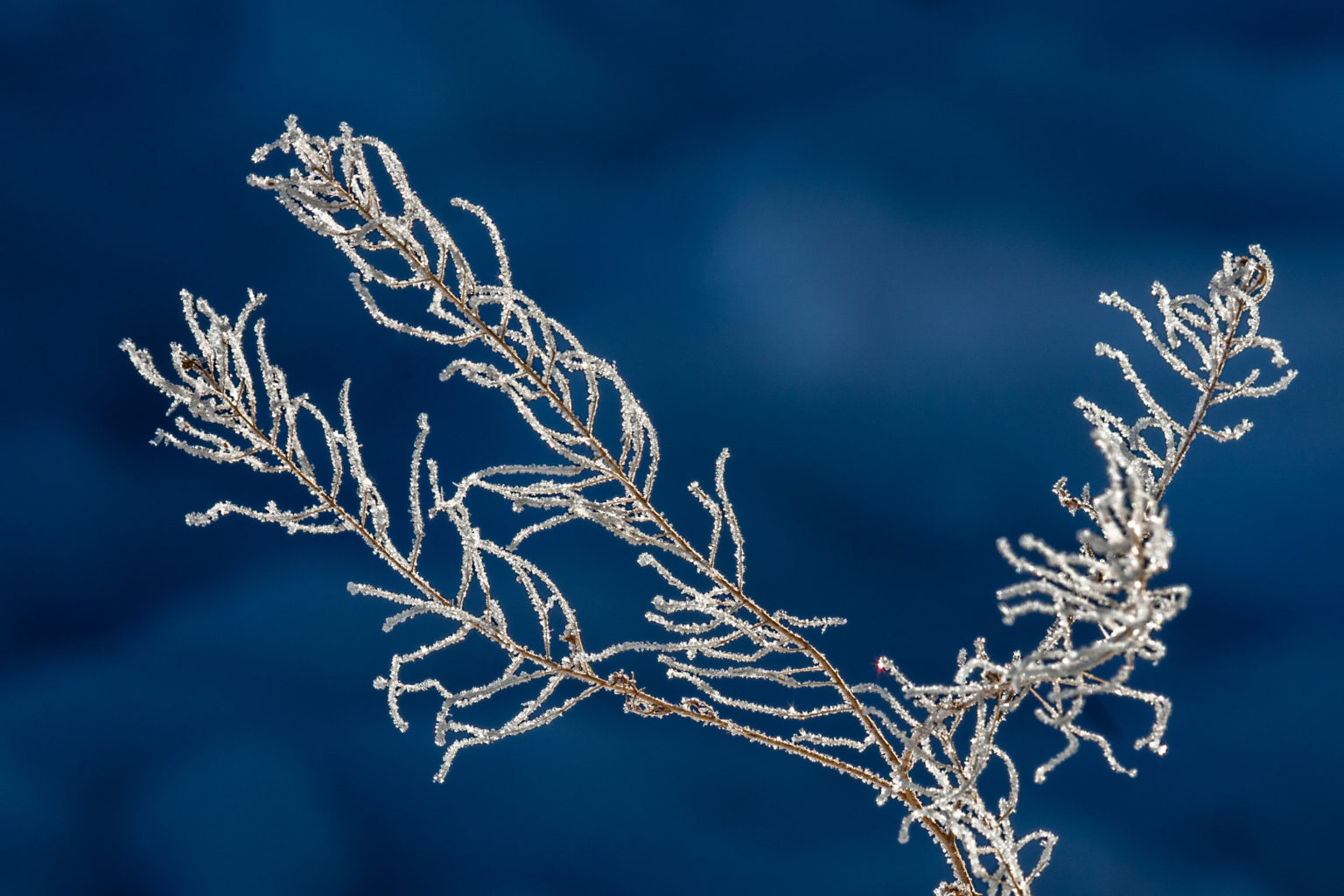The Nature Of: Stick Season

By Sean Beckett, NBNC Staff Naturalist
For awe and amazement in Vermont’s forests, fall foliage has got nothing on “Stick Season.” What November lacks in sumptuous, kaleidoscopic colors, it makes up for in grit and ingenuity. Trees, like many of us, go to astonishing lengths to survive our northern winter.
Let’s start with buds. Each bud contains a fully-formed, dehydrated leaf, folded like origami beneath hard bud scales. Contrary to popular belief, the buds that will explode in leaf and flower next May are already formed. Many of our trees, in fact, create next year’s buds shortly after leaf-out, holding them as a long-term investment for nearly a full calendar year. But why? Producing buds is very energy intensive, so trees schedule it for the season when they can soak up as much sun as they want. If trees waited until fall, there would be little moisture, sunlight, or leaves for the task.
Trees then employ a multitude of designs for their precious buds to survive the winter. Dogwood and boxelder buds, for instance, are densely furry to retain radiant warmth against the wind’s convective heat loss. Red maple and American beech buds, on the other hand, have shiny, waxy coatings to keep out ice-forming moisture.
All sorts of molecular survival strategies are at play inside the buds, too. If the “guts” of the tree cells freeze, it’s game over. So the cell membrane becomes extra porous to facilitate water moving into the space between the cell membrane and the cell wall where ice is tolerable. The membrane also becomes extra fatty to stay flexible in the cold. Meanwhile, plant starches are converted into sugary antifreeze to help reduce the freezing point of intracellular water (this partly explains a maple’s sweet sap).
Ice only forms when there are suitable molecules — “ice nucleation sites”— to glom onto. Plants actively block ice from attaching to these by producing “cryoprotectant” proteins and fatty acids. Tannins, for instance, which exist in high concentrations in our cold-hardy conifers, are great cryoprotectants. Such molecules allow liquid water to persist in the cells at temperatures way below zero. But supercooling is risky business — too much jostling, a puncture to the bud’s scale, or one iota of ice formation, and the whole bud instantly freezes solid.
Even autumn’s color is about winter survival. Winter is a predictable time of intense tree famine. Little sunlight and frozen ground means no liquid water, no way of making food, and no way of transporting nutrients through the tree. To prepare, deciduous trees disassemble their leaves’ expensive, green chlorophyll to stockpile the nitrogen they contain. Our yellow and orange foliage comes from the carotenoid and xanthophyll pigments left behind once the green chlorophyll that masked them is recycled. Chlorophyll is also a natural UV filter. In its absence, some trees produce anthocyanin to give leaves a replacement “sunscreen” while the delicate chlorophyll recycling process is happening. Our red foliage is thanks to anthocyanin pigment.
Soon nothing is left of the leaves except cell walls and spare cytoplasm, so the tree cleaves them off. An abscission point forms at the base of each leaf: an engineered point of weakness with a waxy, protective layer on one side, and a weak, easily-torn cell layer on the other. By engineering the exact point of tearing, the tree can guard against any precious water escaping, or any pathogen invading.Even autumn’s color is about winter survival. Trees disassemble their leaves’ expensive green chlorophyll to stockpile the nitrogen they contain. Fall color is from the other pigments remaining once the green is gone. When nothing remains of the leaves except cell walls and spare cytoplasm, the tree discards them.
What first seems like a lifeless branch is actually an evolutionary tour-de-force — a panoply of molecular magic bracing against the harsh winter. This Stick Season, cherish your trees as you would any other hardy Vermonter: by admiring gumption over gaudiness, and perseverance over pizazz.

